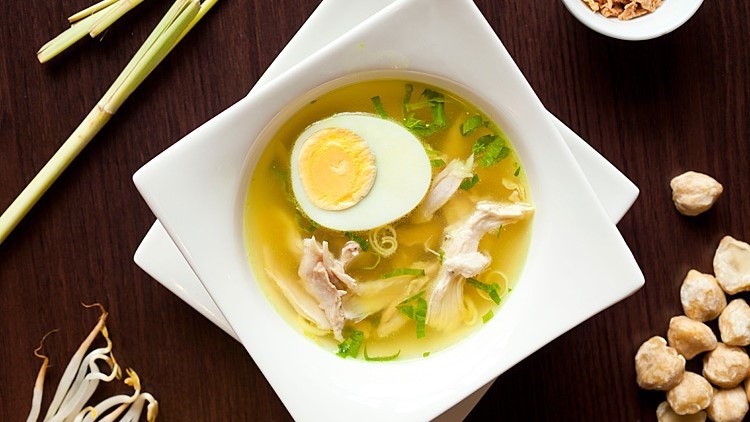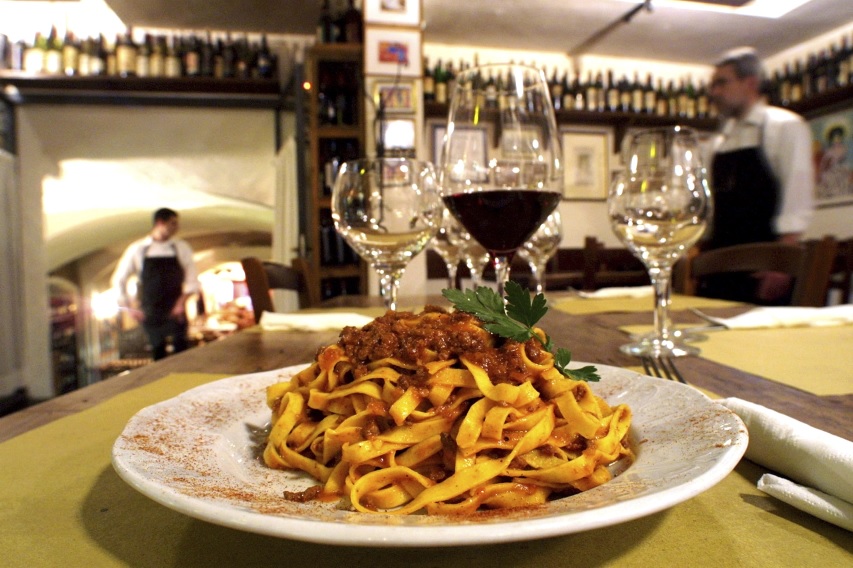Rijsttafel: A Beginner’s Guide to Amsterdam’s Indonesian Food Scene
Rijsttafel is the perfect introduction to colonial Indonesian cuisine in Amsterdam.
Rijsttafel. If you’re a foodie considering a trip to Amsterdam, it’s something you’ve probably heard of. Amsterdam is famed for its Indonesian and Surinamese food – but why? What does the term rijsttafel mean? And where can you try it? Read on, intrepid foodie – you’re about to find out!
A Short History of Rijsttafel
Rijsttafel is effectively two words sandwiched together: “rijst,” meaning rice, and “tafel,” meaning table. We’ll get onto what that actually encompasses later. For now, suffice to say it’s a Dutch word for an Indonesian dish (or rather, several dishes). But the connection doesn’t stop there. Between 1800 and 1949, Indonesia was a colony of the Netherlands. In fact, it wasn’t even called Indonesia until it gained independence. Before that, it was known as the Dutch East Indies (although the term Indonesia had been used to refer to the geographical area for some time). The Dutch have their former colonies to thank for their prominence in the spice import trade throughout the 19th and early 20th centuries.

Dutch colonials, proud of their Indonesia colony, created the rijsttafel to showcase the region’s abundance. / Courtesy of Wikipedia.com
While the dishes that make up a rijsttafel are mostly Indonesian in origin, the concept of a rijsttafel is wholly Dutch. The rijsttafel is a veritable feast of dishes from all over the islands that make up Indonesia’s archipelago, accompanied by rice. While locals would most likely eat one or two dishes local to their region in a single sitting, the Dutch colonials wanted to show off the abundance of their colony to guests. And abundant is certainly one word for a rijsttafel. You can expect anywhere up to a dozen, 20 or even 30 dishes to appear, in varying degrees of spiciness and with varying origins.
Rijsttafel in Amsterdam: What You Can Expect
Although Indonesia became independent from the Netherlands more than 65 years ago, the rijsttafel tradition stuck – at least over here. So while a restaurant serving rijsttafel in Indonesia is extremely rare, in the Netherlands (and Amsterdam especially) it is commonplace. Perfect for anyone who has trouble making up their minds about the menu (or who is prone to food envy), ordering a rijsttafel is a great way to experience one of Amsterdam’s culinary gems. Not that you really need to look at the menu, but here are a few of the things you might find if you do.
The ‘Main’ Dishes
Satay is commonly found among the rijsttafel dishes.
• Satay - Arguably the best known on the list, satay is to the Netherlands what chicken tikka masala is to Britain. It’s crossed over from the realm of “ethnic” food into something you’ll find on pub menus with a side order of chips. That being said, the satay you’ll find in Indonesian restaurants should be a cut above: Marinated skewers of chicken or pork come with slightly sweet, yet umami savoury peanut sauce.
• Rendang – Another popular dish, beef rendang should fall apart with the grain of the meat, and should be rich with the thick, almost dry, semi-sweet rendang sauce.
• Gado-gado – With the most fun name to pronounce, gado-gado is a mix of vegetables (cooked or raw), again served with a peanut sauce.
• Babi kecap – Served in a sweet soy-based sauce that’s no less delicious for being much thinner than the sauces mentioned above, babi kecap involves succulent pork belly braised in its own juices.
• Sayur lodeh – Another vegetable dish, this time in a thinner, coconut-based sauce. Perfect for dressing up with some spicy accompaniments (see below).
• Telur balado – Hard-boiled eggs never tasted as good as they do in this super-spicy, thick chili sauce.
Telur balado are Indonesian Spicy Fried Boiled Eggs.
The Rice
While plain boiled/steamed rice will generally always be served, most restaurants serve at least one or two other varieties of rice to soak up all these delicious sauce-based dishes. You can almost certainly expect to try nasi goreng – Indonesian fried rice that includes everything from peas to prawns.
The Accompaniments
• Sambal – Amsterdammers like their Indonesian food hot, and sambal is the perfect way to add fire to pretty much any other dish. While there are several varieties, basic sambal is essentially red chilli paste. Use sparingly, or you may regret it.
• Serundeng – While I’ve never been a huge fan of this (mostly because I don’t like the texture of desiccated coconut), I see other people sprinkling serundeng liberally on their food. It’s a mixture of peanut and toasted coconut, and it lends a satisfying crunch to dishes that would otherwise be predominantly soft and wet.
• Krupuk – The Indonesian version of prawn crackers, these are great as a snack while you’re waiting for your rijsttafel to arrive.
Where to Find the Best Rijsttafel in Amsterdam
Although there’s a long history of Indonesian food in general (and the rijsttafel concept specifically) in Amsterdam, not all satay is created equal. Just like any other cuisine, there are good and bad examples of it. Here are five of my top picks:
Blauw
Stylishly presented Indonesian rijsttafel is served at Blauw Amsterdam.
A little out of town on the Amstelveenseweg, Blauw is well worth the trek – especially as you get to walk or bike through the Vondelpark to get there. Its split-level interior is tastefully decorated, and it feels like a real night out for a group of friends. The rijsttafel is enormous (I challenge you to finish all the dishes in one evening!) but if you do have room for dessert, those are tasty, too. I’m not sure if he’s still there, but they used to have a resident photographer who would take a photo of your group with all your dishes laid out on the table in front of you – a nice souvenir of a delightful evening!
Jun
Soto ayam is the star of Jun’s rijsttafel feast.
Run by Edy Junaedy, the friendly owner and chef of this Amsterdam West restaurant will make things as spicy or mild as you like. The menu changes every three months, but some classic dishes are standard. Order the iconic soto ayam to start. This deliciously fragrant chicken soup is flavored with turmeric, which gives it its characteristic yellow colour. Then move onto your rijsttafel.
Sama Sebo
Sama Sebo, specializing in rijsttafel, is one of Amsterdam’s oldest and most famous Indonesian restaurants.
Restaurant Sama Sebo is one of the oldest and most famous Indonesian restaurants in Amsterdam – and their specialty is, of course, rijsttafel. It may seem a little expensive compared to other Indonesian restaurants, but it is well worth it. If you’re looking to be a little more economical, they do a decent set lunch menu for €18 per person.
Tempo Doeloe
Rijsttafel dishes at Tempo Doeloe can be eye-wateringly hot. / Courtesy of Amsterdam Foodie
Handily located on the Utrechtsestraat, close to the buzzing Rembrandtplein, Tempo Doeloe is as busy and full of atmosphere as you’d expect from its location. Because of that, reservations are essential – although even if you’ve booked well in advance, don’t expect to get seated on time. Despite things being a little chaotic, they do one of the best rijsttafels in town. The dishes come in three spice levels – starting with the mildest and working their way up. Even for a die-hard chilli-addict, the dishes at level three can sometimes be eye-wateringly hot.
Sampurna
Sampurna is among the oldest Indonesian restaurants in Amsterdam.
Another centrally located restaurant – this time on the flower market at the bottom end of the Singel – Sampurna has been around for decades. Despite its ultra-touristy location (which by definition means that its customer base is largely tourists), Sampurna doesn’t compromise on the quality of its food and service. The décor is relaxed but intimate, with low lighting and small tables. If you don’t fancy a full rijsttafel, you can also order satay skewers for an affordable price. Sampurna offers great value for its location.
Download the ExtremeFoodies app for the Essential Eats wherever you are on the planet: ExtremeFoodies
For more fantastic foodie content, connect with ExtremeFoodies across social media:
Category:
Recommended features by ExtremeFoodies







